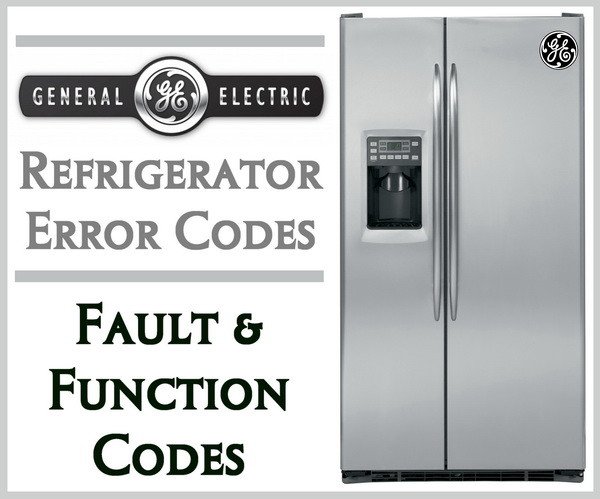
So, let’s get to the root of this quirky code. The F2 error on a GE refrigerator typically relates to a temperature sensor problem. Imagine you’re trying to drive a car without a functional speedometer—certainly makes things difficult, right? Similarly, when the temperature sensor inside your fridge goes haywire, it can’t properly monitor and control the cooling environment, potentially leading to spoiled food and a whole lot of frustration. Understanding this code is the first step in keeping your refrigerator in tip-top shape and avoiding surprise glitches.
Understanding Error Code F2: What It Means and Why It Happens
To make sense of Error Code F2, let’s dive a little deeper into what’s going on behind the scenes. Consider this: your refrigerator’s temperature sensor is like its brain—it sends crucial information to the control board about how cold the inside of your fridge or freezer should be. When this sensor malfunctions, the control board doesn’t receive accurate data, leading to improper cooling and, ultimately, the dreaded F2 code flashing on your panel.
Think about it this way: if your fridge could talk, seeing F2 would be like hearing it say, “Hey, something’s up with my temperature readings!” The sensor could be acting up due to various reasons, like a short circuit, a loose connection, or simply old age. Picture it as a lightbulb that flickers before it finally burns out—it gives you signs before it stops working altogether.
Understanding that F2 is essentially about the sensor narrows things down significantly. A faulty sensor can cause your fridge to overcool or not cool enough, both of which are not ideal scenarios for your fresh produce or your favorite ice cream. Tackling this issue promptly ensures your food stays fresh and your energy bills don’t skyrocket due to an overworking appliance.
Steps to Prevent Error Code F2 from Appearing
Now that you grasp what Error Code F2 is all about, let’s focus on prevention. If the temperature sensor is the usual culprit, maintaining it is key. Think of it like tending to a garden: regular care and attention can prevent weeds—here, the “weeds” are those pesky errors. So, how do you keep your fridge’s sensor clean and functioning? Well, simple practices such as regularly cleaning the inside of your fridge can go a long way. Dust and debris might seem harmless, but over time, they can affect sensor functionality, much like how dust affects a computer’s performance.
Another helpful tip is to keep an ear out for unusual noises. You might not consider your fridge’s sounds as music, but they can be telling! Clicking, humming, or buzzing noises that are out of the ordinary might signal a problem with the sensor or other components. Just as you would listen to your car for signs of trouble, tune into your fridge’s soundtrack for hints of potential issues.
Lastly, don’t underestimate the power of correct fridge placement. If it’s crammed into a corner or directly under sunlight, it can interfere with temperature readings. Imagine wearing a heavy coat in summer—uncomfortable and unnecessary, right? Give your fridge enough breathing room and keep it away from heat sources to maintain optimal performance.
When and How to Seek Professional Help
Despite our best efforts, sometimes things go awry—much like when you’re fixing a leak and suddenly everything’s wet. If F2 keeps cropping up despite your prevention tactics, it might be time to call in the cavalry, aka a professional technician. A technician can accurately diagnose the issue, much like a doctor with a stethoscope can listen to a heartbeat.
Calling for professional help doesn’t mean you’ve failed; it’s just acknowledging that sometimes expert eyes and tools are necessary. They can assess whether the sensor itself needs replacement or if something more complex is at play. Think of it as getting a more thorough check-up for your fridge.
However, you might want to double-check a few things before making that call. Ensure all connections are tight and secure and try resetting the appliance by unplugging it for a few minutes. It’s equivalent to rebooting your smartphone when it’s acting glitchy—a simple fix can sometimes work wonders.
Keeping your refrigerator running smoothly is a bit like nurturing a plant: it requires attention, care, and regular maintenance. By understanding the causes of Error Code F2 and taking proactive steps to prevent it, you can enjoy peace of mind knowing your fridge is reliably keeping your food fresh. Remember, cleaning regularly, listening for odd noises, and ensuring proper placement are your first lines of defense.
If issues persist, don’t hesitate to reach out for professional assistance. After all, maintaining a functional fridge is crucial to a happy kitchen. By taking these steps, you can ensure your GE refrigerator remains an invaluable, trouble-free kitchen companion for years to come.
